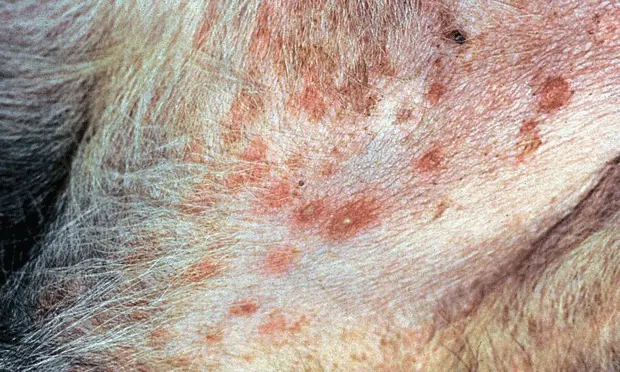Cutaneous Manifestations of Canine Hyperadrenocorticism—Exogenous or Endogenous

Please see PDF to view more images.
The skin can exhibit a wide variety of lesions associated with excess steroids, regardless if the steroid source is endogenous or exogenous (iatrogenic). Since the overall effect of steroids is catabolic, one might expect to see atrophy, alopecia, weakness of skin and muscle, and other similar metabolic effects.
Some of the lesions illustrated below are more classically seen with steroid excess than others and most dogs with hyperadrenocorticism have at least 1 or 2 of the lesions. These lesions may be seen in any combination; however, it would be rare for a dog to have all or even many of these lesions.
Many of the following lesions are not unique to steroid administration or excess. Recognition can be quite problematic for veterinarians as can management. The veterinarian should use caution in evaluating unusual skin lesions; steroid therapy should not be administered if there is a chance that the lesions are caused by steroids. If in doubt, a biopsy is indicated and sample selection should represent the cutaneous lesion.
Additional Signs
There are additional cutaneous signs of hyperadrenocorticism noted in the literature. For example, facial dermatosis has been described in 4 dogs as the only cutaneous manifestation.1 Bruising is not uncommon and is especially noticeable when venipuncture is necessary. Nonhealing wounds are another sequela to hyperadrenocorticism. The diagnosis and treatment of hyperadrenocorticism is important to the well-being of the pet. References are available to assist with choosing the best test and treatment for the individual patient.
Acknowledgement
The author would like to thank the Universities of Florida and Pennsylvania for allowing use of their case material.